Remember the reconstruction of the Colossus of Constantine? It has arrived in Rome: Disneyland effect is feared
Remember the reconstruction of the Colossus of Constantine that, between 2022 and 2023, was displayed at the Recycling Beauty exhibition at the Prada Foundation in Milan? For the past couple of weeks, the recomposition of the statue has reached Rome, where assembly has begun at the Caffarelli Gardens, part of the Capitoline Museums, where the colossus will once again be displayed to the public starting Feb. 6. No details are yet leaking out from the museum, but the location is now known thanks to photographs that many Romans have posted on social media.
The reconstruction, the work of Factum Foundation , which has given three-dimensional substance to an idea of Salvatore Settis, curator of Recycling Beauty, aims to reassemble the statue that was destroyed at an unspecified time. Its fragments were found in 1486 following an excavation at the Basilica of Maxentius and were later brought to the Capitol, in the courtyard of the Palazzo dei Conservatori, where they remain today. We do not know the original history of the statue: perhaps Constantine had a statue dedicated to a god (perhaps the Capitol’s Jupiter Optimus Maximus) reworked, or a monument dedicated to his predecessor Maxentius. The reconstruction of the colossus is more than ten meters high and is made of plaster, polystyrene, and bronze dust. It will therefore flank the real remains of the statue; at the moment, however, it is not known whether the “fake” colossus will remain in the Caffarelli Gardens indefinitely, or whether its display will have a set duration.
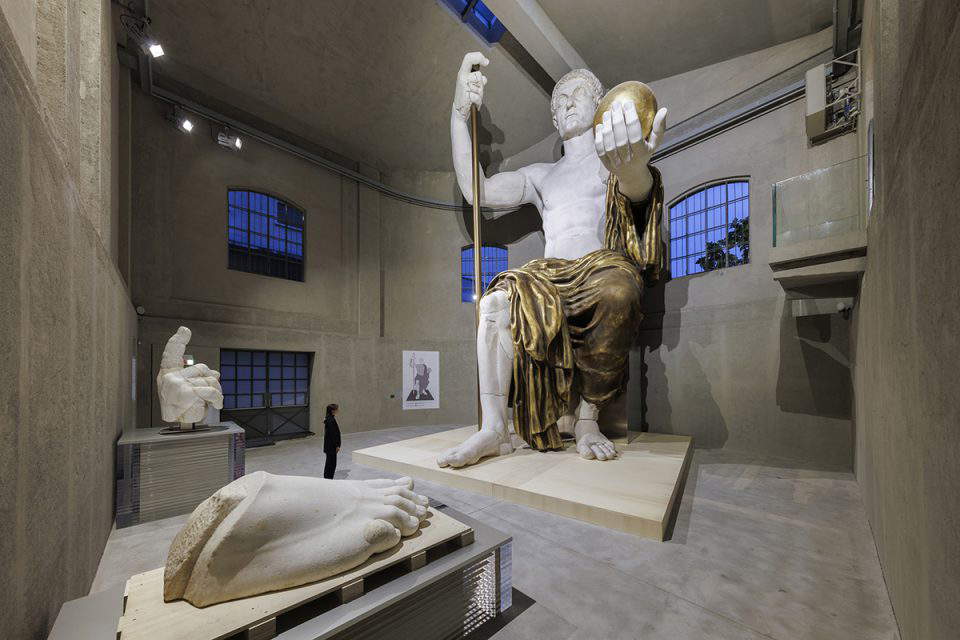
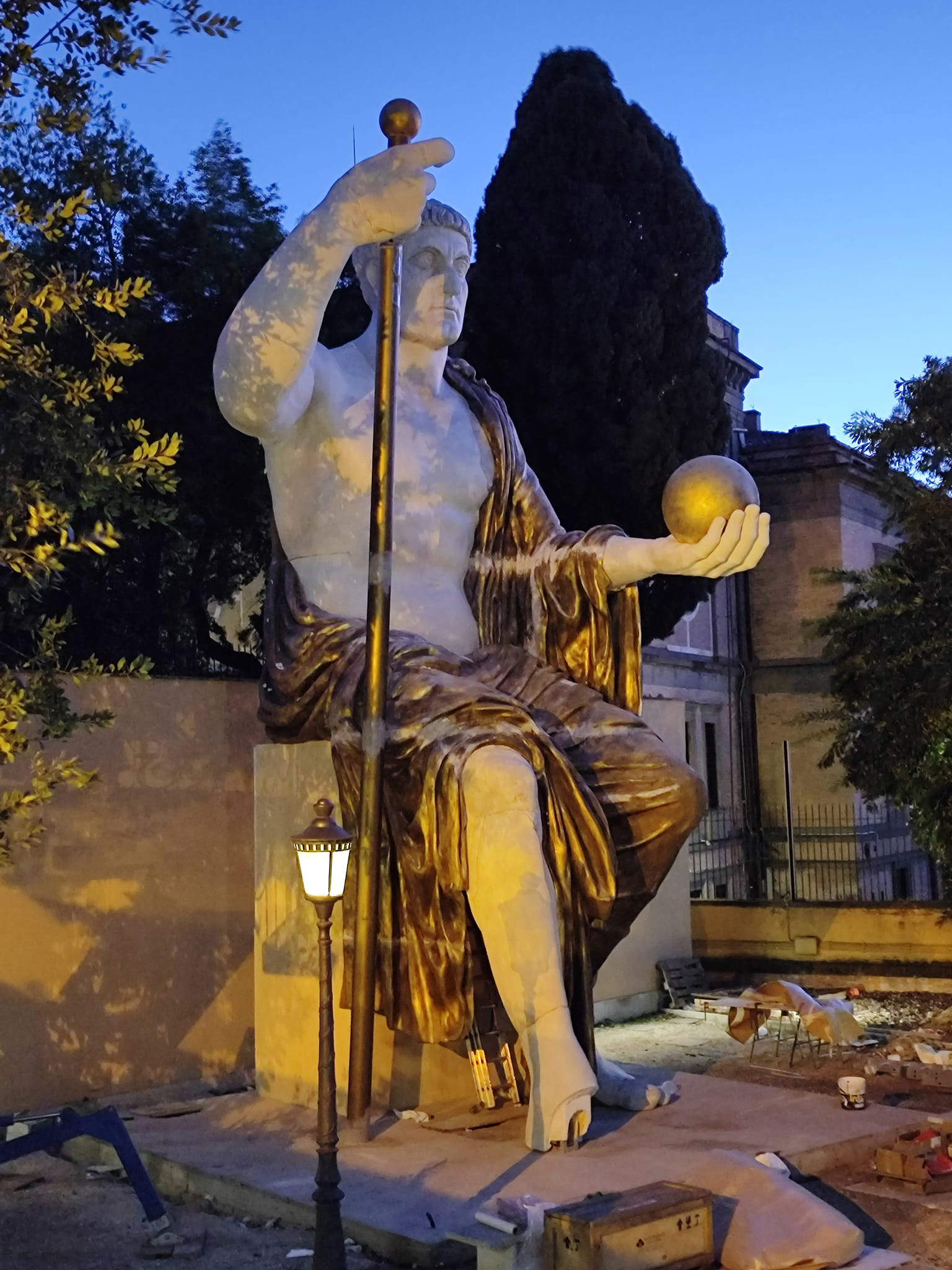
Work on the reconstruction began at the end of March 2022, when Pedro Miró, Otto Lowe, and Imran Khan of Factum Foundation went to the Capitoline Museums to record the ten fragments (the head, right arm, right hand, right knee, right tibia, a calf fragment, right and left foot, wrist, and a chest fragment, the latter of which’the latter preserved at the Colosseum Archaeological Park) at high resolution using techniques such as photogrammetry and LiDAR, a remote sensing instrument, with even some difficulties, since the fragments placed against the walls of the courtyard made it challenging to record them. However, all data were archived with great accuracy during the 3D modeling phase, which therefore initially involved the fragments. For the posture, Factum instead took as a reference a plaster copy of a statue of Emperor Claudius in the guise of Jupiter, preserved in the Ara Pacis Museum.
After this phase, 3D sculptor Irene Gaumé worked for several months in close collaboration with the Capitoline Museums’ team of curators and experts to recreate the shape, pose, and the way the paludamentum was draped over the body. Each fragment was modeled in 3-D and placed on a digital body created using statues in similar poses as references. The engineering team meanwhile was developing the overall internal structure and materials, working in tandem with the Fondazione Prada team to ensure that the sculpture would fit into the spaces of the Cistern, where it was displayed for 2022-2023, and could be transported and assembled on site.
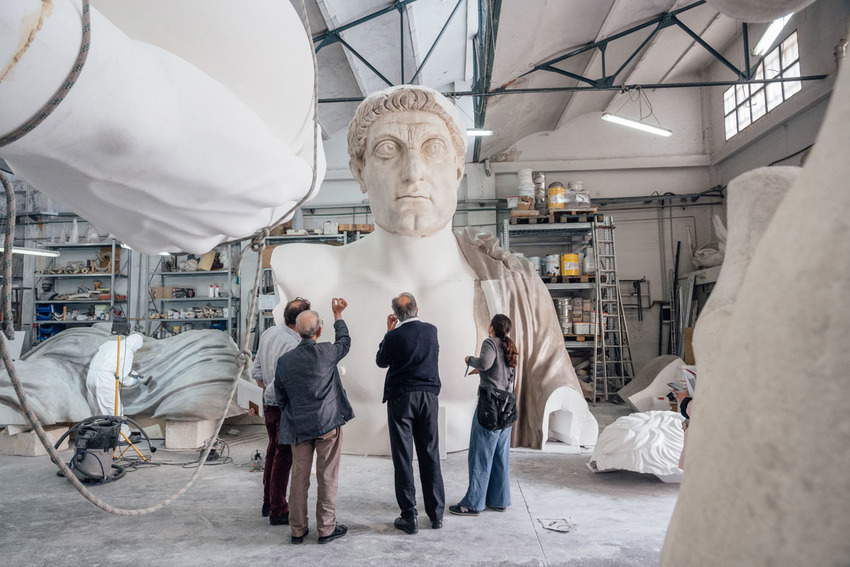
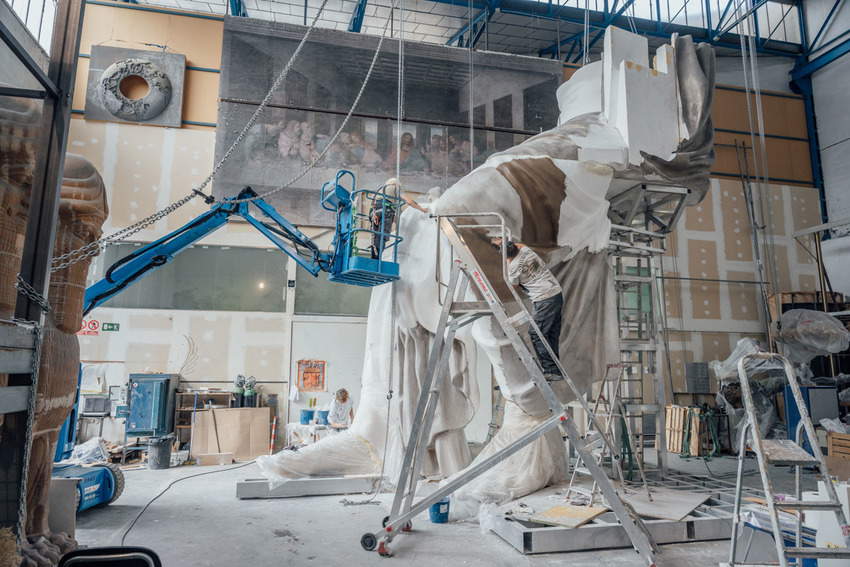
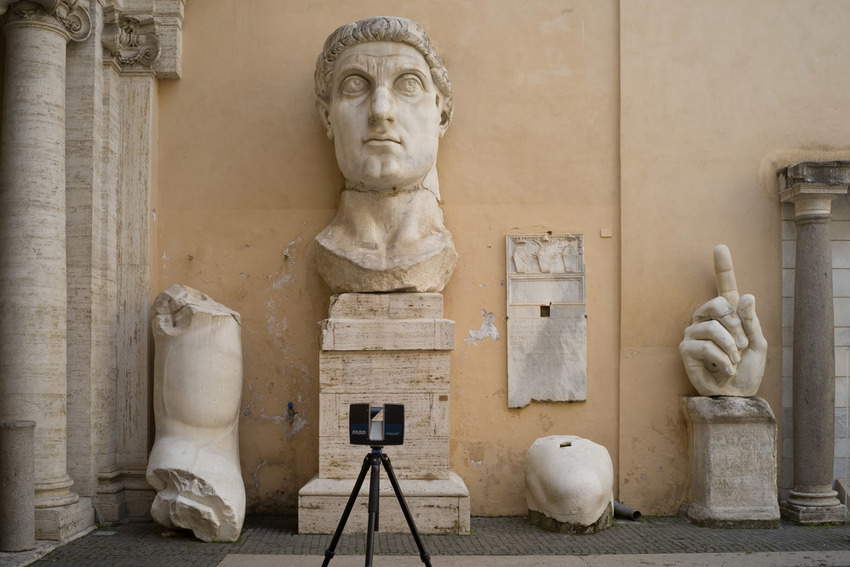
In May 2022, digital mediation work in physical form began in Factum’s laboratory. It was decided to visually distinguish the facsimile fragments from the digitally reconstructed body and mantle. The recorded digital data of each fragment were rematerialized as 1:1 scale 3D prints, used to make positive casts in reinforced resin. The surface was coated with a painted plaster mixture to resemble the original marble, altered by exposure to the elements. The results are exact facsimiles of the original fragments. The recreated sections of the body were made of polyurethane, coated in several layers of resin mixed with marble powder and mica to achieve a clean, neutral white color. The mantle was made of milled polystyrene, coated with acrylic resin mixed with bronze powder, to which aged gold leaf gilding was applied. After completing the final internal structure and base, a team of six people assembled the thirty sections of the Colossus over the course of a week inside the Fondazione Prada exhibition space.
The Colossus was then disassembled and, as mentioned, is now being assembled at the Caffarelli Gardens. Romans are divided: there is no shortage of comments from those who believe that this operation accelerates the transformation of the capital’s historic center into an amusement park for tourists. After the anastylosis of the Basilica Ulpia at the Forum of Trajan, here then is the reconstruction of the Colossus. And the discussions have just begun.
 |
| Remember the reconstruction of the Colossus of Constantine? It has arrived in Rome: Disneyland effect is feared |
Warning: the translation into English of the original Italian article was created using automatic tools. We undertake to review all articles, but we do not guarantee the total absence of inaccuracies in the translation due to the program. You can find the original by clicking on the ITA button. If you find any mistake,please contact us.





























